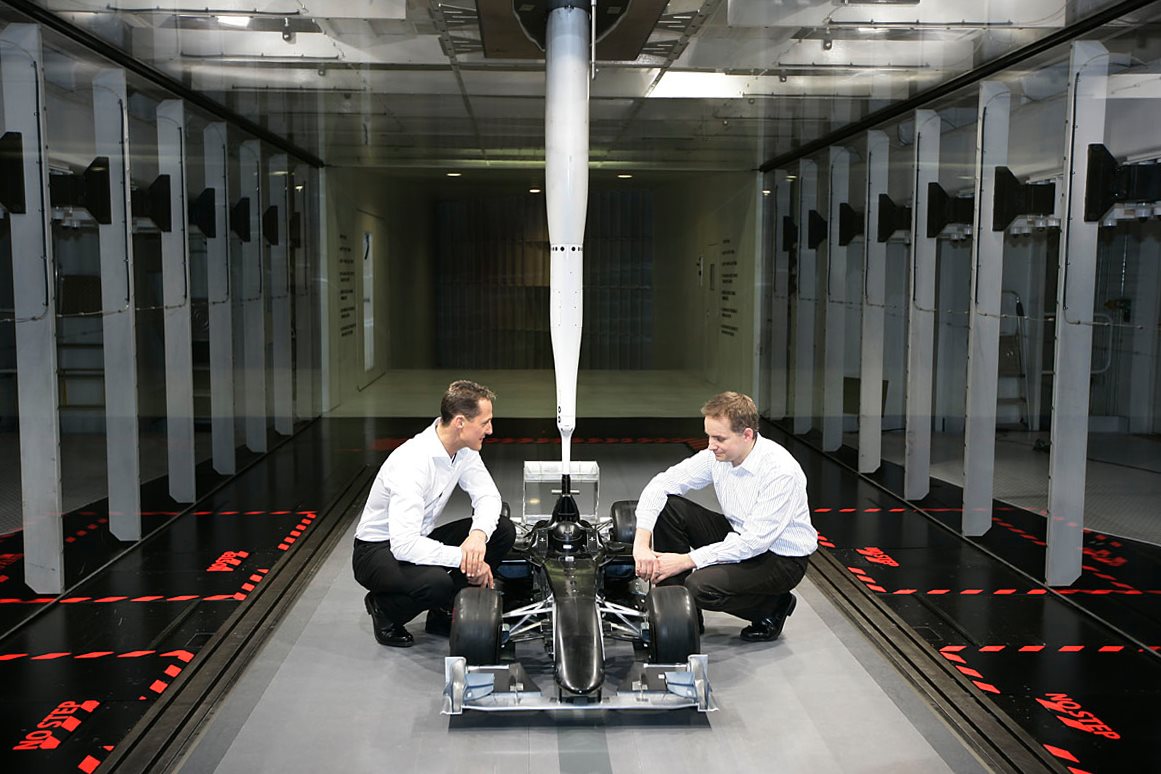“We get GPS data from all of the teams. If Lewis wants to see the data from the last 50 exits from a corner by Vettel, we can give him that information.”
Think about that for a moment. Now imagine how every F1 team can, in effect, extrapolate exactly how much power its rivals are making, how consistent rival drivers are, and which line through a corner works for any given surface, weather or tyre-wear condition. We’re sitting in Mercedes F1’s race control room in Brackley and the technological overload is staggering.

Outside this glass-walled nerve centre are the biggest brains in the organisation, a whole floor of designers in cubicles, most with PhDs from places like MIT, Harvard and Oxbridge. Their screens show various iterations of suspension components, body panels, hubs, flanges and other things I can’t identify. Inside the control room it’s quiet. Race weekend is next weekend, Hamilton and Bottas having just scored a 1-2 at Bahrain. Brackley is a happy ship at the moment. The data card for ‘Bahrain 5.412km’ and a layout for the track sits on the rows of keyboards and monitors in the control room. In all there are 126 monitors in here.
Our guide explains how this all works on race weekends. “We have 90-100 people going to 21 countries on race weekends. Our travel and logistics department take care of all their visas and vaccinations in-house. It’s a big task. The team take over 40 tonnes of gear per race. FIA rules dictate that we are only allowed 60 people at the track who can affect the performance of the car,” he explains. Hence this place.
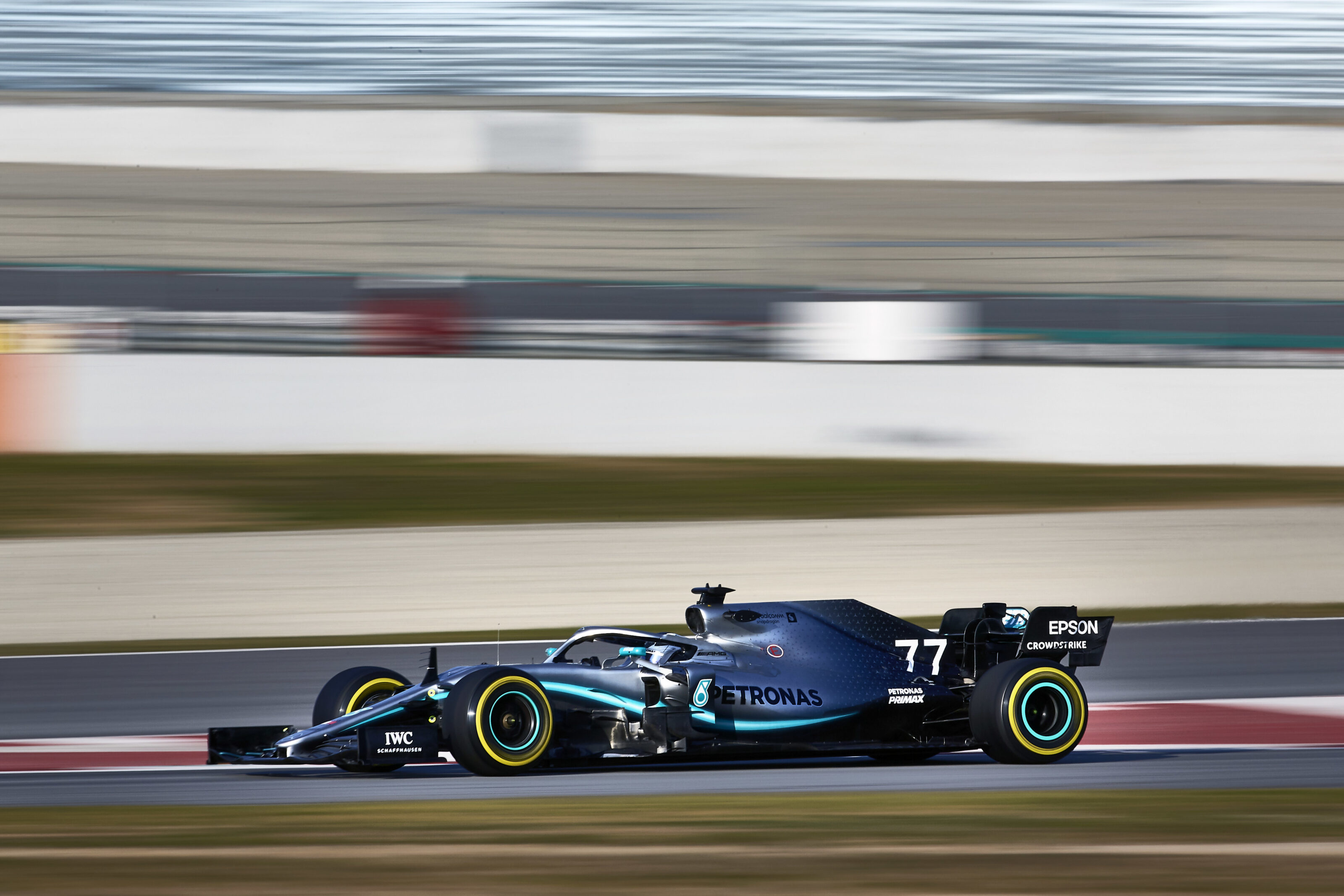
In theory, any of the 20 people in here at race weekends can press a button and communicate directly with the driver, but team protocol dictates that any requests must go through the race engineer on the pit wall. The data transmission rates are incredible. “We use Tata subsea fibre-optic cables to carry the data,” explains our guide. “We’re almost live. We’re 0.1 seconds from any race in the world, except for Australia. That signal takes 0.4 seconds to arrive.” So much for the NBN. Every time the car passes the pits, it wirelessly hands over gigabytes of data that then comes streaming into Brackley, 115km north-west of London, in less time than it takes to blink. There’s a certain exactitude to the engineers here. Woe betide anyone overheard calling the 0.1sec delayed transmission a live stream.
The Brackley site is a legacy of the days of the old Adrian Reynard works. The Mercedes F1 team can trace its lineage from Tyrell to BAR to Honda to Brawn GP and then, in 2010, to the three-pointed star. It’s fair to say that the budgets have stepped up a bit since the virtually penniless Brawn GP days. “Red Bull certainly missed a trick in 2009,” laughs Anderson. “We had such little money as Brawn GP that had they just bumped a few front wings off in free practice, we wouldn’t have had the funding to have replaced them. They’d have taken the title.” Things have certainly changed since then, as evidenced by one designer telling us: “We engineer based on need, not budget.” Imagine how galling that must sound to Haas or Racing Point.
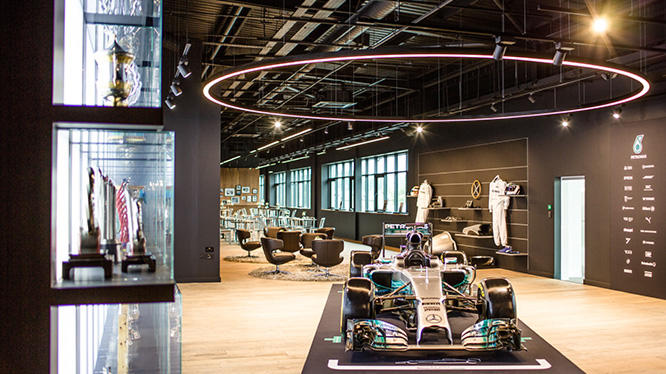
The wind tunnel on site was originally developed by Honda and features a 2.2MW fan that is so powerful that it’s seismically isolated on a sprung concrete block. Without it, the rest of the complex shakes when the tunnel’s in use. Although a full-sized car can fit in the tunnel, FIA rules limit teams to a 60 percent scaled model on the grounds of cost. Wind tunnels are hugely expensive and even Ferrari uses the old Toyota tunnel in Cologne, along with McLaren and, until this week, Racing Point, who have now bought time at Brackley.
The rules are pretty dense, and there’s a huge formula which limits the combined time in tunnels and also computational fluid dynamics (virtual wind tunnel) testing that can be done. Wind tunnel occupancy is filmed by FIA cameras so teams can’t sidestep the rules. The FIA also limits the amount of time teams can work on the cars, imposing a mandatory summer break.
What’s perhaps most dizzying about the process of constructing an F1 car are the things we don’t tend to consider. Sure, it’s amazing that a 1.6-litre petrol engine can develop 635kW+ with another 120kW coming from a battery underneath the driver’s backside. Or that thermal efficiency is better than 50 percent; way better than the best road car powerplant. It’s incredible to look at the titanium gearbox that’s no bigger than a lunchbox, which changes gear in three-thousandths of a second and which, as a stressed member, holds the whole rear crash structure and wing. Drill down further and the level of attention to detail becomes apparent.
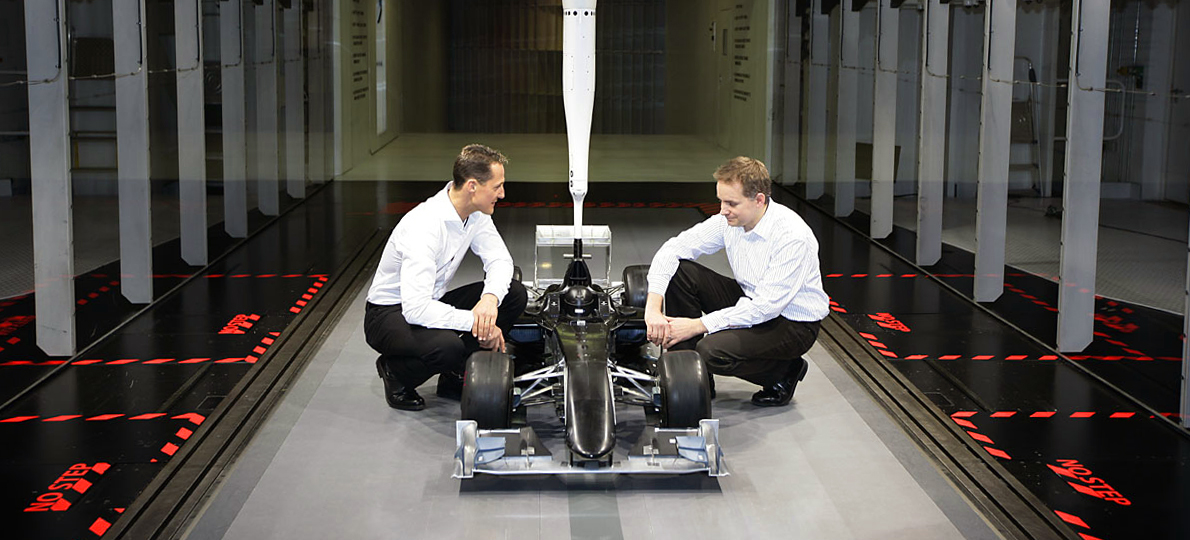
The front wing on Nico Rosberg’s FW07 in which he won the 2016 drivers’ championship consists of 290 separate components. When you see a wing smashed off, bear in mind that it takes 50 man hours just to paint. There are only four airbrush artists in the UK skilled enough to paint the 3D-effect three-pointed star onto the nosecone, and the front wing contains infra-red sensors that scan the front tyres, passing that data to the pits so that tyre degradation can be viewed in (almost) real time. They’re part of a suite of 400 sensors on the car which are used on Friday free practice, the number of sensors then being pared back across the weekend before the car enters parc ferme in its lightest practical guise.
This year’s car features 1100 hand-painted three-pointed stars on its bodywork, each individually coloured to blend with the black-to-silver fade the Mercedes cars have been using since the introduction of hybrid tech in 2014. The paint team travel to each race, and in China and the US they use local Mercedes dealerships as paint shops.
The individual set-ups between Hamilton and Bottas – and, indeed, test driver Esteban Ocon – have to be taken into account. The team generates different seats, but the pedal width and spacing is also customised, and each driver has their own preferences for colour codes on the wheel. Lewis likes purple, apparently. The button set-ups vary, and even esoteric things like the grip preferences and the thumb lengths of each driver are measured to perfectly position the key controls on the wheel, examples of which cost around $100K each. That’s an A45 AMG with some decent options. No wonder the team get ticked off if the drivers throw them in the dirt.
We walk past the simulator building where Ocon spends hours ahead of each race, preparing a briefing sheet based on his findings to the teams. The ‘engine’ for the simulator is rFactor Pro, the industry standard also used by Red Bull, and the tracks are all mapped to millimetre accuracy.
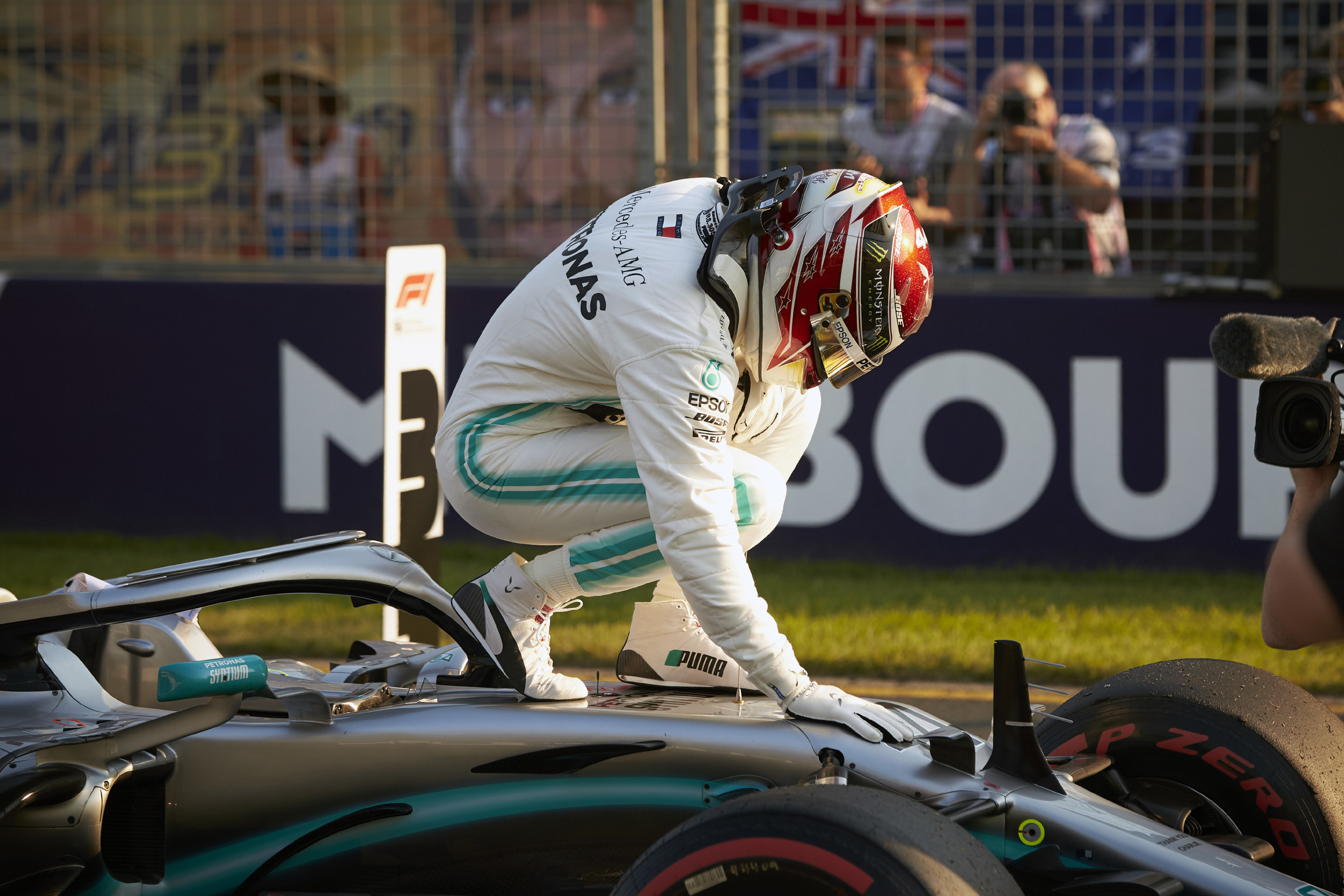
Things get even more techy when we get down into the materials fabrication area. Here there are a set of five replica pit garages. Hamilton and Bottas’ ‘boxes’ sit side by side in the same position as they’d be on track, Lewis to the left, Valtteri to the right as you face them. There’s a titanium halo structure to hand prior to it being wrapped in glossy carbonfibre. We’re told that its bar straight ahead affects driver vision negligibly and that eye tracking demonstrated that drivers are looking obliquely into and through bends at braking, apices and exit points while on straights they’re often consulting the wheel, tuning diffs and checking lights.
The driveshaft responsible for sending all that power to the wheels sits on a workbench. It’s 30mm in diameter, not much wider than a Sharpie marker. There are 70,000 components in the car and Mercedes is moving to RFID tag almost all of them. There’s a parts desk downstairs where engineers can get hold of anything. When the desk is closed there’s a suite of vending machines available that contain the most popular parts. Getting a new front wind endplate or a camera mount blank is as easy as getting a Snickers on a railway station platform.
The CAD plans from the eggheads upstairs can be sent directly to any one of 24 milling machines (11 of them five-axis units) to create metal parts or to the composites department to create the fine layers, or layups, of which carbonfibre parts are composed. Five autoclaves big enough to fit an entire chassis into cure the layups at 90psi and 180 degrees Celsius hum in the background. The team also has X-ray and CT scanners to check carbonfibre parts for microscopic cracks or manufacturing defects. It takes around 50 days to build a chassis and five are usually constructed per year. The team makes around 7000 parts per year in the composites department and there’s an almost surgical cleanliness in there. Vacuum tables take care of splinters, which can injure employees and puncture the airtight bags that are vacuum compresses to bond the layups.
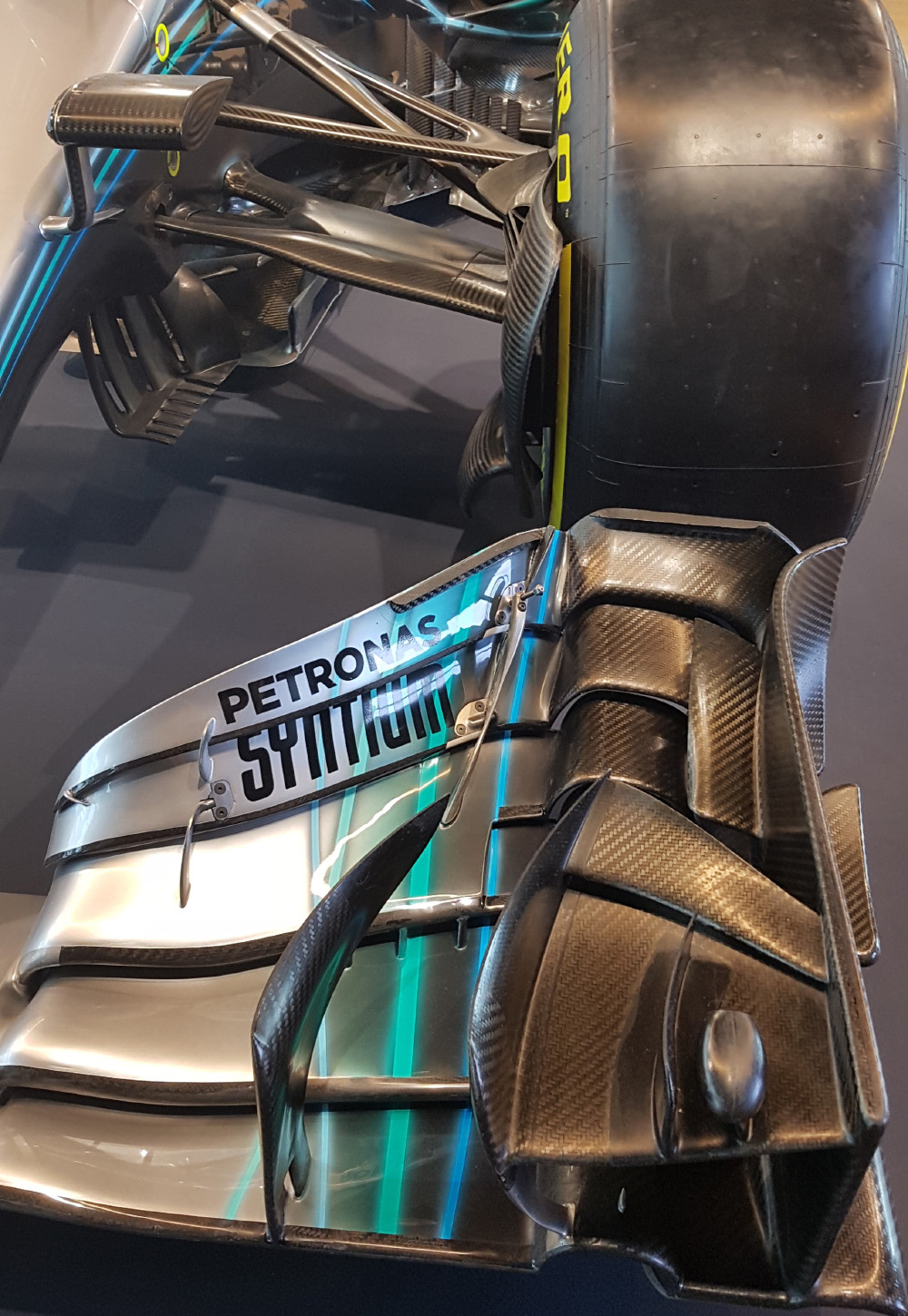
Some parts are bought in, but most are made in-house, especially those with high intellectual property value. The metal parts are particularly beautiful. A steering column gleams like something from a Terminator movie, aluminium billets milled to sub-10 micron accuracy (a human hair is 70 microns across) and we see samples of various steels, aluminium and titanium as well as Densamet, a heavy alloy of nickel and tungsten that’s used for ballast. A 3cm cube of aluminium weighs 148 grams. The same cube in Densamet is almost a kilo – 969g to be exact. It’s also useful for putting to bed the urban myth that teams use depleted uranium as ballast.
We walk past the seven-post rig that’s currently running a simulation of the Shanghai track on a car. Four of the posts support the wheels, the other three replicate gravitational forces on the chassis. It can replicate an entire season’s running in 3.5 hours and subjects new components to a punishing stress test. The cars sit on special balloon tyres supplied by Pirelli for this very purpose. Genuine race tyres would explode given this treatment.
This facility has come a long way since Honda pulled out of F1 in 2008. Everybody who was laid off then has been offered a role back at the expanded plant. Mercedes-AMG Petronas Motorsport has won the past five F1 constructors’ championships on the back of the amazing brains trust at Brackley. F1 might be cyclical, but it’d be hard to bet against a sixth succession.


